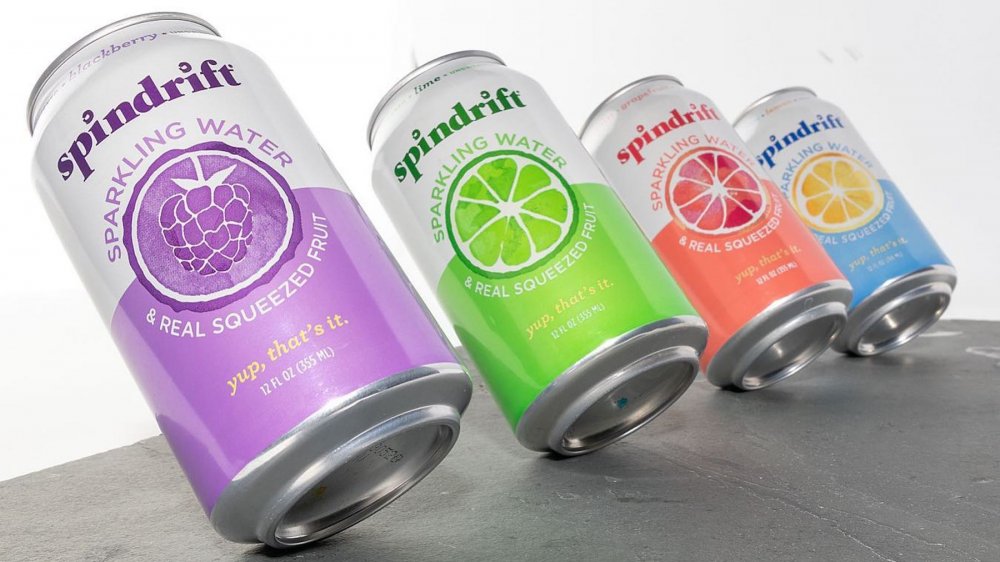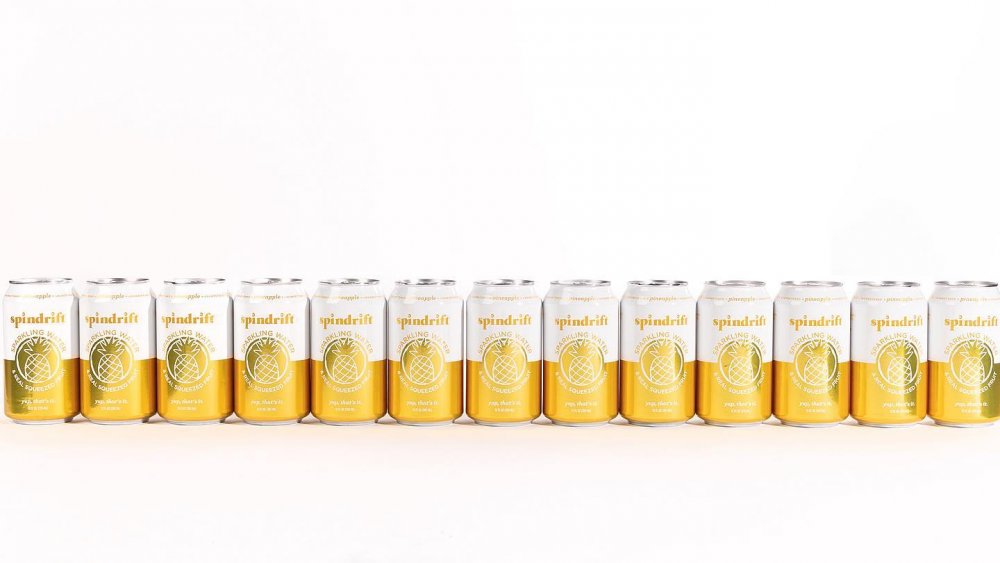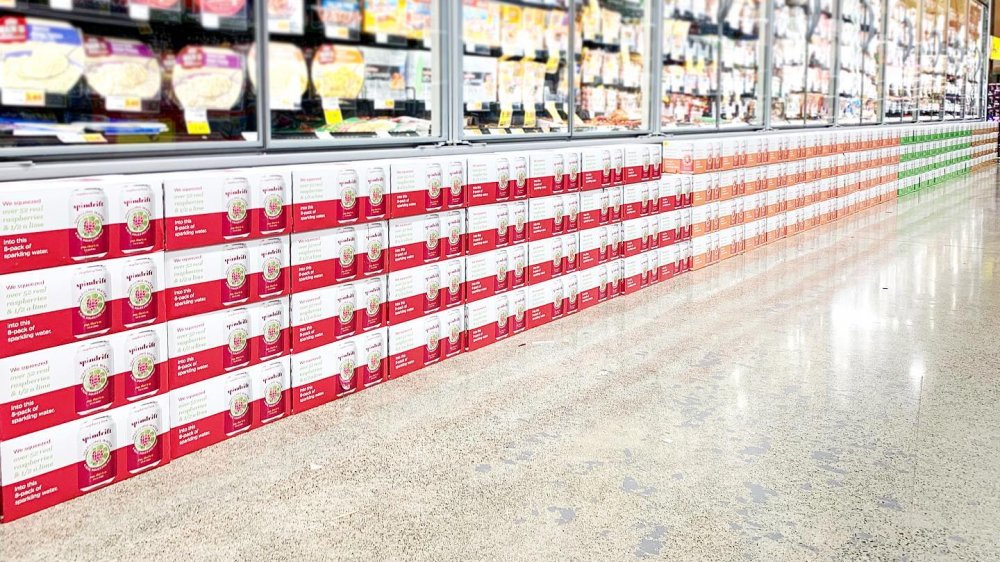The Untold Truth Of Spindrift
The sparkling water market is having a real moment. Fortune reports that the sector saw a whopping 23.4 percent increase in sales in 2020. That's a lot of bubbly water. With all of the cans of low-cal, fruit-flavored waters out there, choosing which case to take home with you can a bit of a quandary. After all, is there really any difference between Bubly, La Croix and Spindrift? To learn more about the subtle differences in these sparklers, let's dig into Spindrift.
The relative newcomer to the sparkling water game has set itself apart by using fruit juice to flavor its carbonated beverages, and that's only part of what sets it apart from the competition.
Unlike other sparkling water giants, Spindrift starts with a homespun back story and a founder with a longtime passion for all things edible. Massachusetts-born Bill Creelman's first foray into the food world was a boutique business that specialized in artisan products from the island of Nantucket (via Boston Magazine). Trading in scallops and cranberry goods didn't prove to be a moneymaking model, so Creelman pivoted to the more accessible (and profitable) world of beverages.
Fresh juice sets Spindrift apart
Creelman created Stirrings, a line of craft cocktail mixers made without the chemical components and artificial flavors generally found in the bottled varieties. The venture proved to be a great success and provided seed money for Creelman's soft drink venture. He took the name from a natural phenomenon — "spindrift" is the "white, foamy wake from a wave," writes Boston Magazine. Creelman told Mass Live that the Spindrift story began with the founder mixing fresh squeezed juice and seltzer in his home kitchen in 2010, and hit the national market in 2014.
The fresh juice that sets Spindrift apart from the majority of other sparkling waters out there came into the picture in an unlikely manner. When Creelman was concocting early versions of his soda alternative, he couldn't quite figure out the "natural flavorings" used by his perceived competition. Instead, he took to using real fruit instead.
Using real fruit has become the focus of Spindrift's marketing strategy. The simple, colorful cans list the product's ingredients in plain sight: sparkling water and real squeezed fruit. The simplicity of Spindrift is punctuated by a subscript that reads "yup, that's it."
Not quite calorie free
Boxes of Spindrift cans advertise exactly how much juice goes into each can, fruit by fruit. For example, it takes the juice of 20 blackberries to flavor a four pack, and one whole orange and two mango slices for an eight pack.
Using real fruit instead of natural flavorings differentiates Spindrift from its competition, not only taste-wise, but also in nutrition, or more specifically, calorie count (via Vox). While most sparkling waters are calorie free, the addition of juice adds a negligible number of calories — nothing that's going to tip the scale. A can of raspberry lime has just nine calories, while cucumber only clocks in at two.
While Spindrift prides itself on authentic fruit flavors, there are certain instances where the real deal didn't cut it. Creelman told Boston Magazine that he chose to discontinue the watermelon option. Apparently the subtle flavor of watermelon didn't match up with the general public's sour candy conceptions.


